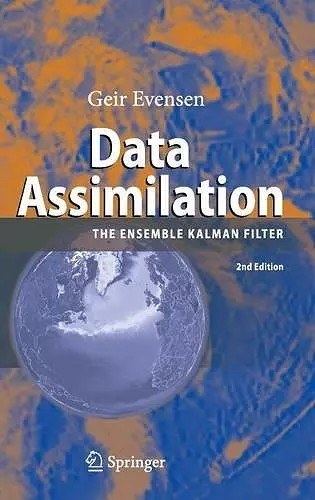Data Assimilation
The Ensemble Kalman Filter
Format:Hardback
Publisher:Springer-Verlag Berlin and Heidelberg GmbH & Co. KG
Published:27th Aug '09
Currently unavailable, and unfortunately no date known when it will be back
This hardback is available in another edition too:
- Paperback£219.99was £219.99(9783642424762)

This comprehensive guide on data assimilation methods, titled Data Assimilation, explores theoretical foundations and practical applications across various disciplines.
The volume titled Data Assimilation provides an in-depth exploration of various popular data assimilation methods, detailing how these techniques can be derived from a unified theoretical foundation. It highlights the distinctions and connections between different methods while elucidating the properties that define them. By utilizing numerous examples, the book effectively demonstrates the application of these methods in practical scenarios.
In Data Assimilation, both traditional state estimation and parameter estimation are covered comprehensively, showcasing methods such as weak and strong constraint variational techniques, as well as ensemble filters and smoothers. The text is designed to be accessible across various disciplines, presenting mathematical frameworks and derivations relevant to any field where dynamics intersect with measurements. While the mathematics is kept at a modest level, readers should have a foundational understanding of basic spatial statistics, Bayesian statistics, and calculus of variations to fully grasp the content.
The emphasis on ensemble methods, especially the ensemble Kalman filter and smoother, positions Data Assimilation as a valuable reference for understanding the derivation, implementation, and application of these techniques. The second edition introduces new material, particularly concerning the formulation and resolution of combined parameter and state estimation problems, along with a new chapter addressing spurious correlations, localization, and inflation, making it a significant update for readers interested in the latest advancements in the field.
From the reviews of the second edition:
“This is a well-written and interesting book addressed to students taking an introductory course in data assimilation and inverse methods … . The material is presented with detail, and calculations are easy to follow. Many figures help the reader to assess the results. Several discussions and comments are provided in each chapter. In this sense, it is written in a pedagogical way. … a reference book for researchers interested in the interpretation and implementation of advanced ensemble methods.” (Jesús Marín-Solano, Mathematical Reviews, Issue 2011 c)
“Data assimilation, as defined by Geir Evensen, refers to the computation of the conditional probability distribution function of the output of a numerical model describing a dynamical process, conditioned by observations. … the book is subdivided into seventeen chapters, which progressively introduce different aspects of data assimilation with Kalman filters. … The book primarily addresses researchers in the field of data assimilation, for whom it represents a basic reference text. The text is very carefully written and is intended to be self-contained.” (Hans Wackernagel, Mathematical Geosciences, Vol. 42, 2010)
ISBN: 9783642037108
Dimensions: unknown
Weight: unknown
307 pages
Second Edition 2009